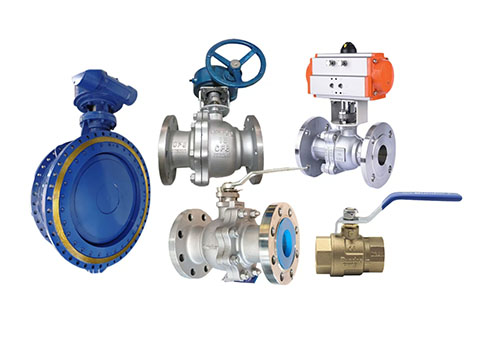Which material of ball valve is wear-resistant and durable?
Posted by Bundor valve
In industrial production and fluid control systems, ball valves are key valve components, and their wear resistance and durability directly affect the operating efficiency and safety of the entire system. So, which material of ball valve is the most wear-resistant and durable? Let's explore several common materials and analyze their advantages and disadvantages.

1. Stainless steel ball valve
Stainless steel ball valve is a very common choice in industrial applications. It has excellent corrosion resistance, high temperature resistance and high strength. Stainless steel materials are mainly divided into 304, 316 and 316L models. Among them, 316 and 316L stainless steels have better corrosion resistance because they contain molybdenum elements, especially suitable for fluid environments containing acid and alkali components. In addition, stainless steel ball valves also have good mechanical strength and are suitable for high pressure and high flow rate conditions. However, under extreme wear conditions, the wear resistance of stainless steel may not be as good as some harder materials.
2. Brass ball valve
Brass ball valves are widely used in water heating, gas and other fields due to their good processing performance and relatively low cost. Brass has certain corrosion resistance and oxidation resistance, but it does not perform as well as stainless steel under high temperature and strong acid and alkali environments. In addition, brass has a low hardness and is prone to wear when used in fluids containing particulate matter. Therefore, brass ball valves are more suitable for environments with normal temperature, normal pressure and no strong corrosive media.
3. Carbon steel ball valve
Carbon steel ball valves have high strength and good wear resistance, and are suitable for high temperature and high pressure working conditions. Compared with stainless steel, carbon steel has a lower cost, but its corrosion resistance is poor, especially in humid and acid-base environments, it is easy to rust. Therefore, carbon steel ball valves usually need to be treated with anti-corrosion, such as anti-corrosion coating or electroplating. In some working conditions with severe wear, such as slurry transportation, carbon steel ball valves are still a good choice due to their high wear resistance.
On the whole, the choice of which material of ball valve is wear-resistant and durable depends mainly on the specific working conditions and medium characteristics. Combined with the actual working conditions, the most suitable ball valve material can be selected to ensure the long-term stable operation of the system.

1. Stainless steel ball valve
Stainless steel ball valve is a very common choice in industrial applications. It has excellent corrosion resistance, high temperature resistance and high strength. Stainless steel materials are mainly divided into 304, 316 and 316L models. Among them, 316 and 316L stainless steels have better corrosion resistance because they contain molybdenum elements, especially suitable for fluid environments containing acid and alkali components. In addition, stainless steel ball valves also have good mechanical strength and are suitable for high pressure and high flow rate conditions. However, under extreme wear conditions, the wear resistance of stainless steel may not be as good as some harder materials.
2. Brass ball valve
Brass ball valves are widely used in water heating, gas and other fields due to their good processing performance and relatively low cost. Brass has certain corrosion resistance and oxidation resistance, but it does not perform as well as stainless steel under high temperature and strong acid and alkali environments. In addition, brass has a low hardness and is prone to wear when used in fluids containing particulate matter. Therefore, brass ball valves are more suitable for environments with normal temperature, normal pressure and no strong corrosive media.
3. Carbon steel ball valve
Carbon steel ball valves have high strength and good wear resistance, and are suitable for high temperature and high pressure working conditions. Compared with stainless steel, carbon steel has a lower cost, but its corrosion resistance is poor, especially in humid and acid-base environments, it is easy to rust. Therefore, carbon steel ball valves usually need to be treated with anti-corrosion, such as anti-corrosion coating or electroplating. In some working conditions with severe wear, such as slurry transportation, carbon steel ball valves are still a good choice due to their high wear resistance.
On the whole, the choice of which material of ball valve is wear-resistant and durable depends mainly on the specific working conditions and medium characteristics. Combined with the actual working conditions, the most suitable ball valve material can be selected to ensure the long-term stable operation of the system.
 简体中文
简体中文 Русский
Русский Español
Español Bundor - Butterfly, Gate, Check, Ball, Globe Valve Manufacturer, Supplier & Distributor
Bundor - Butterfly, Gate, Check, Ball, Globe Valve Manufacturer, Supplier & Distributor
